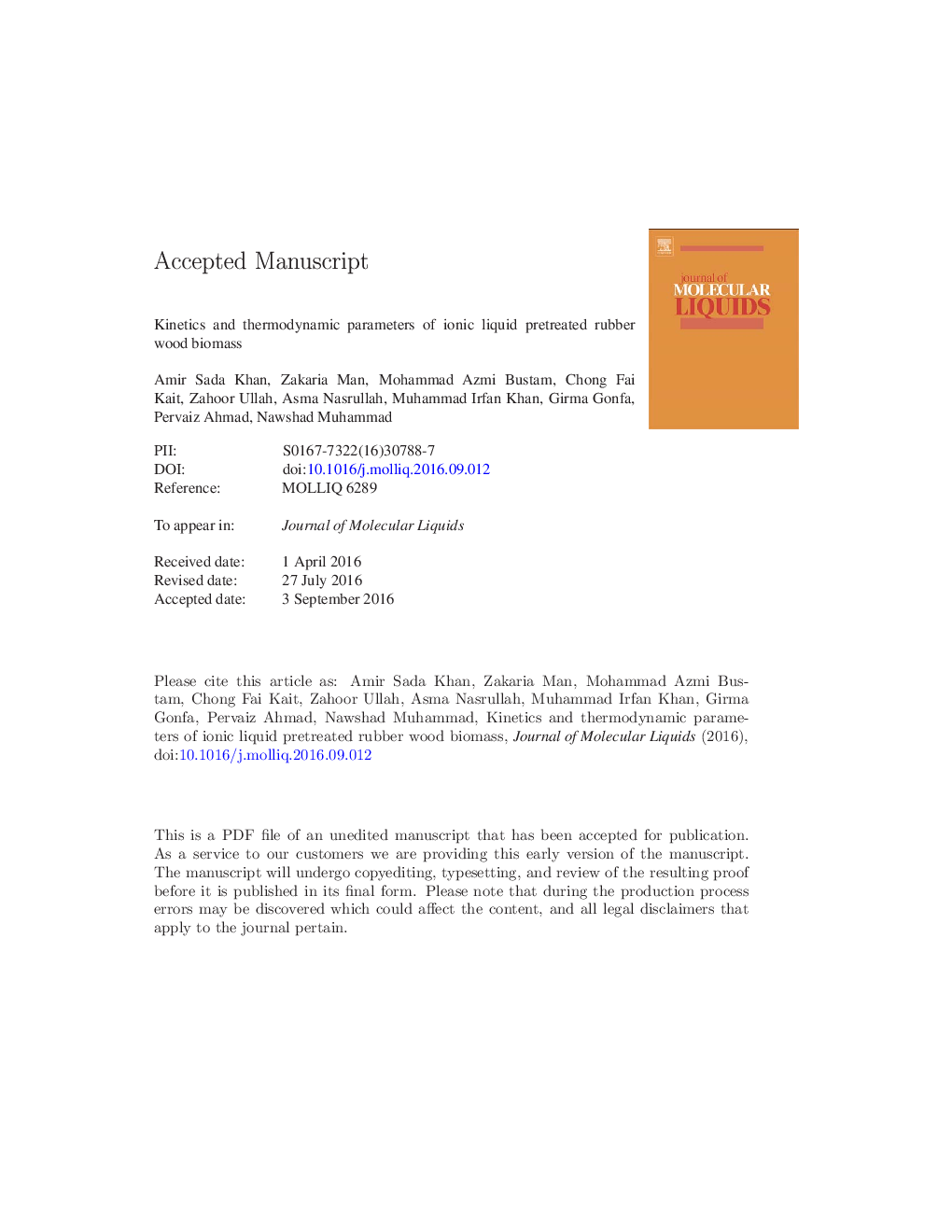| Article ID | Journal | Published Year | Pages | File Type |
|---|---|---|---|---|
| 5409574 | Journal of Molecular Liquids | 2016 | 28 Pages |
Abstract
The impact of ionic liquids (ILs) namely 1-butyl-3-methylimidazolium chloride ([BMim][Cl]) and 1-butyl-3-methylimidazolium acetate ([BMIM][OAc]) on rubber wood pyrolysis kinetic and thermodynamic parameters were investigated using thermogravimetric analysis (TGA). The ILs treated and untreated samples were characterized with FT-IR and elemental (CHNS) analyses. The activation energy for untreated and ILs treated rubber wood (RW) were determined using the Flynn-Wall-Ozawa (FWO), Kissinger-Akahira-Sunose (KAS) and Starink methods. The average activation energy calculated using FWO, KAS and Starink methods for untreated rubber wood was 120.15Â kJ/mol, 117.10Â kJ/mol and 117.60Â kJ/mol, [BMIM][Cl] treated rubber wood was 87.32Â kJ/mol, 77.73Â kJ/mol, and 81.16Â kJ/mol, while [BMIM][OAc] treated rubber wood was 85.64Â kJ/mol, 76.63Â kJ/mol, and 80.47Â kJ/mol, respectively. Starink method was further used to determine the pre-exponential factor and thermodynamic parameters of untreated and ILs treated samples. The thermo kinetics and thermodynamic parameters indicate that ILs pre-treatment decreases the thermal stability of the rubber wood. From FTIR analysis, it was observed that ILs pre-treatment affected the chemical composition of rubber wood. Elemental analysis showed that ILs treated RW has a higher content of Hydrogen/Carbon ratio because of the separation of lignin and hemicellulose during pre-treatment. It was concluded that ILs pre-treatment provided a potential way to improve the thermal conversion efficiency of rubber wood.
Related Topics
Physical Sciences and Engineering
Chemistry
Physical and Theoretical Chemistry
Authors
Amir Sada Khan, Zakaria Man, Mohammad Azmi Bustam, Chong Fai Kait, Zahoor Ullah, Asma Nasrullah, Muhammad Irfan Khan, Girma Gonfa, Pervaiz Ahmad, Nawshad Muhammad,
